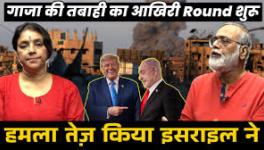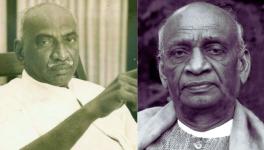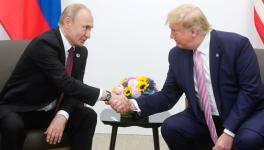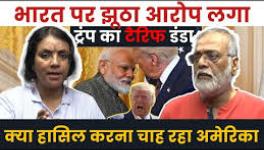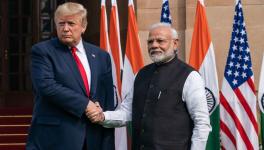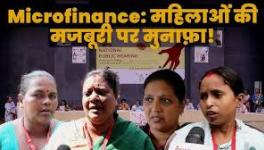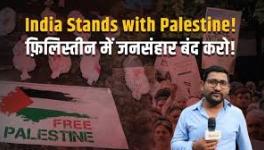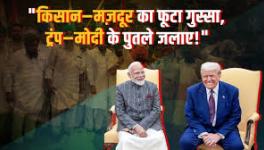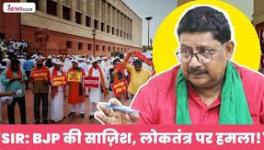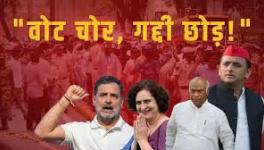Pahalgam Tragedy and Rising Spiral of Hatred
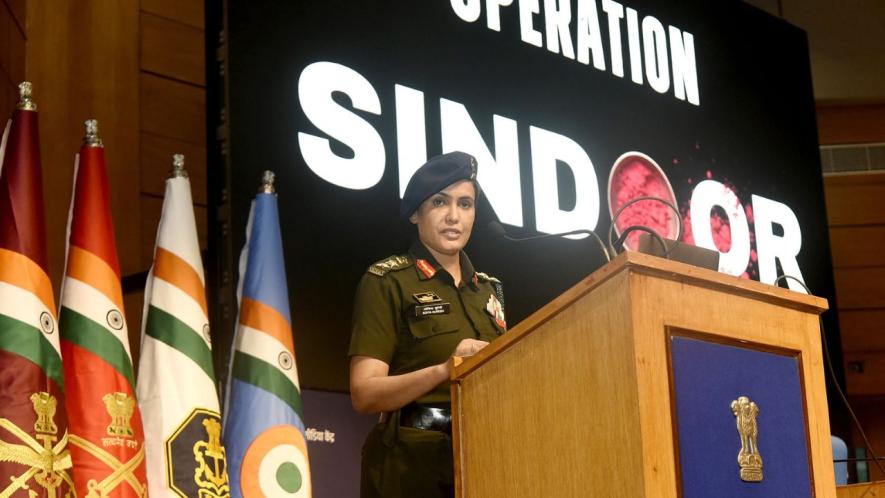
Colonel Sofiya Qureshi addressing the media on ‘Operation Sindoor’ at National Media Centre, in New Delhi on May 07, 2025. Image Courtesy: Press Information Bureau
The killings of 26 tourists in Baisaran near Pahalgam in Kashmir on April 22, was one of the worst tragedies in recent times. Baisaran is a lovely spot reachable only on horses or by walking on the uneven terrain. The killings left the whole nation in deep grief. While the terrorists killed tourists after confirming the religion of the victims, one Muslim, the local person escorting the tourists, tried to resist and was killed.
Kashmiri porters carried the tourists to safe places and opened their houses and masjids for the guests. Kashmir observed a ‘bandh’ and many processions were taken out, raising slogans of ‘Hindu Muslim Unity’, while across the country, Muslims and other groups took out candle marches and offered condolences for the martyrs.
Prime Minister Narendra Modi was due to visit Kashmir during that time but just a few days prior to the visit, he cancelled his trip. At the time of the tragedy, he was in a Gulf country. He cut short his trip and headed back home, and rather than going to Kashmir, went to Bihar to attend a rally, from where he gave a powerful warning to terrorists. The message that terrorists were Muslims and the victims were Hindus was the undercurrent of the whole narrative that was circulated.
Thereafter, there was escalation of tension and hostilities between India and Pakistan, and a ceasefire was declared by US President Donald Trump, while the Modi government has a different interpretation of the ceasefire. Meanwhile, ‘godi media’ had a field day spreading hate with different television channels reporting India winning over different cities of Pakistan while sitting in their plush studios. The TV media fell to unimaginable lows, further smashing the ethics of journalism long abandoned by them.
The worst outcome of all this has been the increase in hate against Muslims. Islamophobia is gripping the country with increasing intensity. In Latur, a Muslim was reportedly labelled a Pakistani and beaten black and blue. Humiliated by this, he allegedly died by suicide. Kashmiri students in a hostel in Uttarakhand were thrown out in the middle of the night and had to stay put in front of the Dehradun airport.
The worst of this was seen when Vijay Shah, a minister in Bharatiya Janata Party’s Madhya Pradesh government, indirectly referred to Colonel Sofiya Qureshi, one of the spokespersons of the Indian Army, as a ‘sister of terrorists’. For the sake of face-saving, he did apologise for this but now the MP High Court has called for an FIR against him.
Mithila Raut, who works with Centre for Study of Society and Secularism, Mumbai, in an article in Dainik Loksatta (Marathi) enumerates the number of hate incidents, as reported in the newspapers. As per her article, there have been many anti-Muslim incidents after the Pahalgam attack. In one such shocking incident in Uttar Pradesh, in Shamli’s Toda village, one Sarafaraz was attacked by one Govind, who is said to have stated that “you have killed our 26; we will kill your 26!” In Punjab’s Dera Bassi in the Universal Group of Institutes, Kashmiri students were allegedly attacked in the hostel.
One Shabbir Dhar, a Kashmiri vendor, living in Uttarakhand’s Mussoorie and selling shawls, was attacked along with his shop assistant as “revenge for Pahalgam”. He, and many other Kashmiri vendors, were threatened not to come back again. In Haryana’s Rohtak, in Kharawar village, Muslim residents were allegedly threatened and asked to leave the village by May 2.
These are some of the incidents that have been culled out from newspapers. How the atmosphere of hate has intensified is very clear from these incidents. The atmosphere in society has been gradually worsening. The Hindu Right-wing has already created an atmosphere against Muslims. Initially, this was created by use of medieval history, where the training in Rashtriya Swayamsevak Sangh (RSS) shakhas, the ‘godi media’ and social media created an “enemy image” of Muslims.
The formation of Pakistan gave another major pretext to those practicing communal politics to assert that it had been formed by Muslims. This is a totally distorted version of the account of history, as the formation of Pakistan was a combination of three factors -- the British policy of ‘divide and rule’, Muslim communalism and Hindu communalism. The ‘Two Nation Theory’ was first articulated by Hindutva idealogue Vinayak Damodar Savarkar.
After the formation of Pakistan, the propaganda was that Partition took place due to Muslims, and this became an additional reason for spreading hate. As such, it was the formation of two States simultaneously, India and Pakistan. Pakistan was to be in Muslim-majority areas.
The add-on to the anti-Muslim propaganda came from the complex Kashmir issue. The exodus of Kashmiri pandits in 1990 was yet again used against Muslims. Exodus of pandits happened when the V P Singh government supported by BJP was ruling at Centre and the pro-BJP Jagmohan was the Governor of Kashmir. Ignoring all that, the anti-Muslim angle in pandits’ emigration became the central point around which hate against Muslims was unleashed.
So, step by step, more issues have been used to torment Indian Muslims. The voices of amity have been muted and every occasion now is turned into adding to the prevalent hate against Muslims, to vitiate the hate used by RSS-BJP to intensify its agenda of a Hindu nation.
Pahalgam and Diplomacy
The issue of Pahalgam has also brought to fore the change in the nature of Indian diplomacy. As per the Shimla Agreement (1971) between Indira Gandhi and Zulfiqar Ali Bhutto, the India-Pakistan issues were to be sorted out in a bilateral manner, without mediation from any third party. With Trump dominating the scene now, and Modi unable to confront him, the equations seem to be changing. Globally, not many countries came to side with India.
The core point is to solve the Kashmir issue based on former Prime Minister Atal Bihari Vajpayee’s Doctrine of ‘Insaniyat, Kashmiryat and Jamhooriyat’ (Humanism, Democracy). We need to live in peace with our neighbours, as Vajpayee again said: “Friends can change, but not neighbours.”
The reflections of ‘Hate Pakistan’, as is the wont of the Hindu Right-wing, supplemented by the loud-mouthed and hate- spewing Indian ‘godi media’, reflects badly on Indian Muslims. It vitiates the possibility of an amicable atmosphere at home.
The intensification of communal problems due to the Pahalgam tragedy needs to be grasped and war- and -hate- mongers have to be negated for peace and prosperity of our country. So far, ‘Pakistani’ was the main abuse for Muslims, ‘Kashmiri’ seems to have been added to the hate list.
The writer is a human rights activist, who taught at IIT Bombay. The views are personal.
Get the latest reports & analysis with people's perspective on Protests, movements & deep analytical videos, discussions of the current affairs in your Telegram app. Subscribe to NewsClick's Telegram channel & get Real-Time updates on stories, as they get published on our website.











